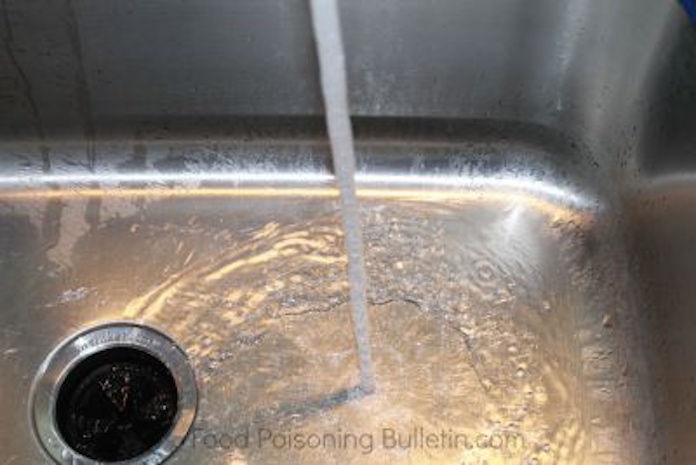The February 22, 2019 issue of the CDC’s Morbidity and Morftality Weekly Report had a study about a Campylobacter outbreak in 2017 that was associated with the municipal water supply in Nebraska. At least 39 people were sickened after they drank untreated city water. The city was not named, just called “City A.”

Apparently, a center pivot irrigation system, that was supposed to pump livestock waste into farmland malfunctioned. Runoff collected in a road ditch near two wells that fed the water supply.
There were 33 probable and 6 confirmed cases in this outbreak. Untreated unboiled city A tap water was the only exposure that was significantly associated with illness.
The city is served by four untreated wells and an interconnected distribution system. After the wells were removed from service, no further illnesses were reported.
Initial questioning of patients did not uncover the water supply as the source of the outbreak. Officials first suspected poultry and ground beef served at two local restaurants and purchased at one local grocery store. The interviews did reveal, however, that there was a report of standing water that “smelled of cattle manure” in the ditch near the wells.
The ditch was only 15 feet from the two water were houses. The presence of the standing water in the ditch was confirmed by city A water operators.
Water is distributed through the well system without any disinfection or filtration. Officials performed coliform and E. coli testing of the water, but only two of the wells were operating on that date. All samples were negative for coliform and Campylobacter when testing was conducted later in the month.
Campylobacter outbreaks have been associated with contaminated water. Although the investigators did not find the pathogen in the wells, samples weren’t taken until longer after the contamination event. The findings also suggest that routine coliform testing, which identifies bacteria found in human and animal waste, may not be a good indicator of the presence of Campylobacter.
Investigators should consider exposure to untreated water sources as a source for Campylobacter outbreaks, and this information should be included on surveys when ill persons are questioned about their food and beverage intake.




